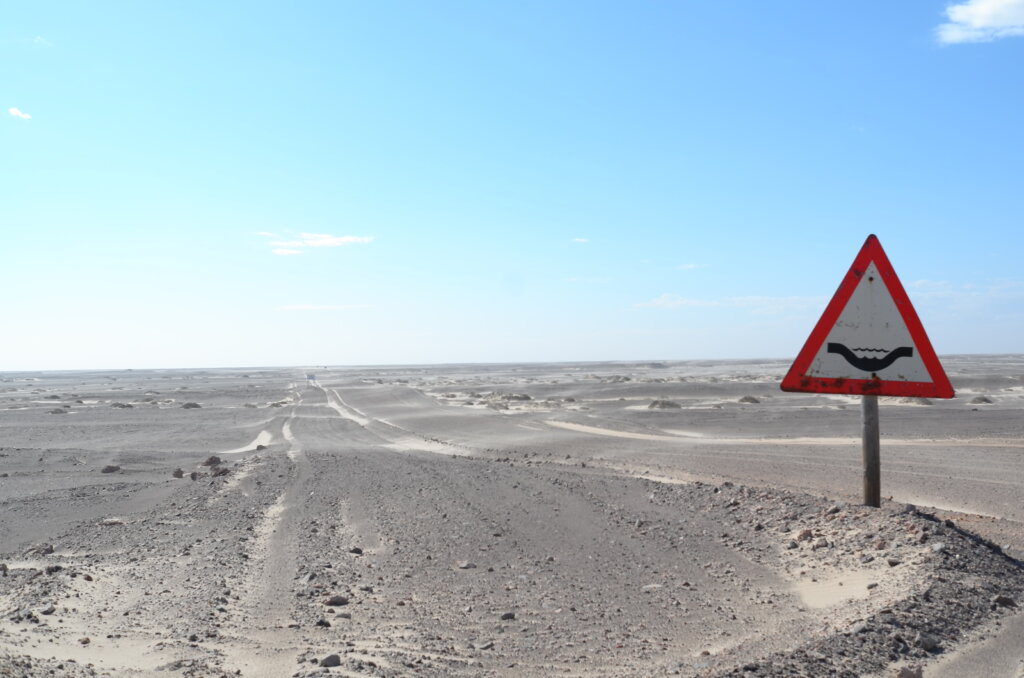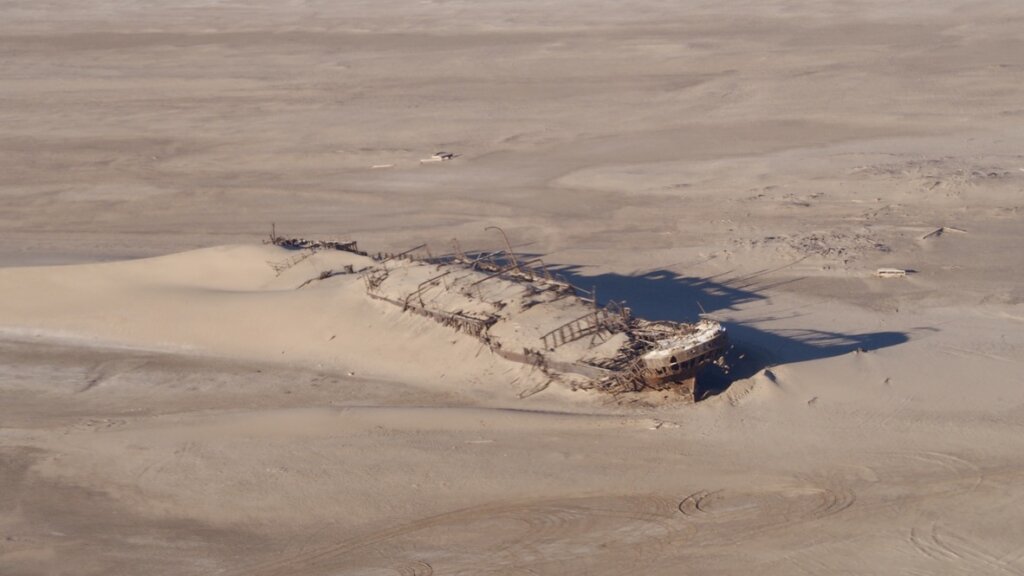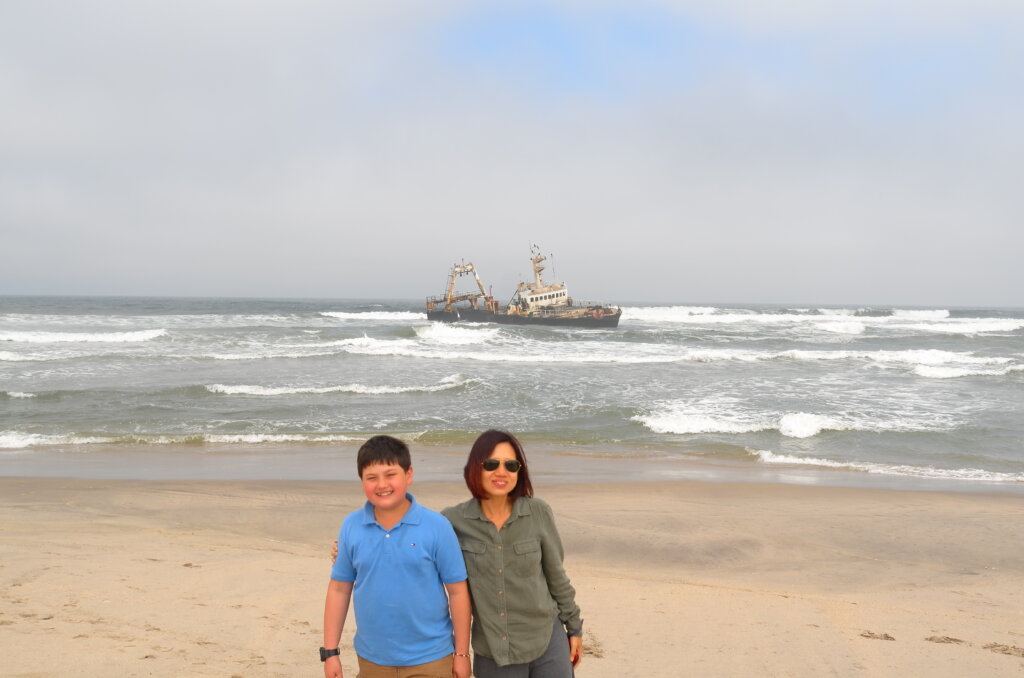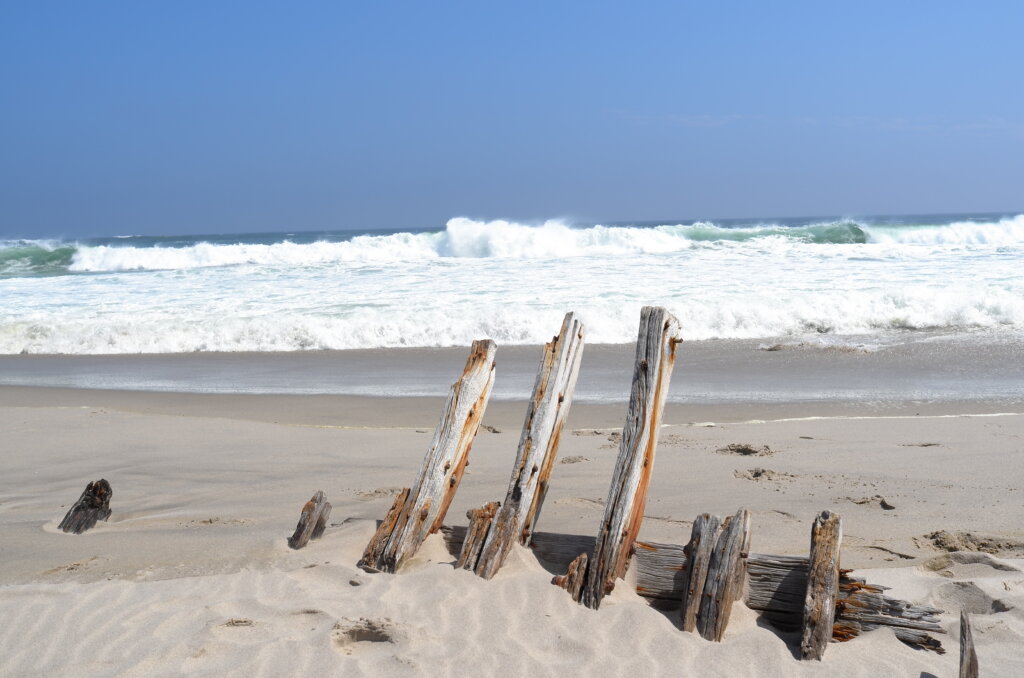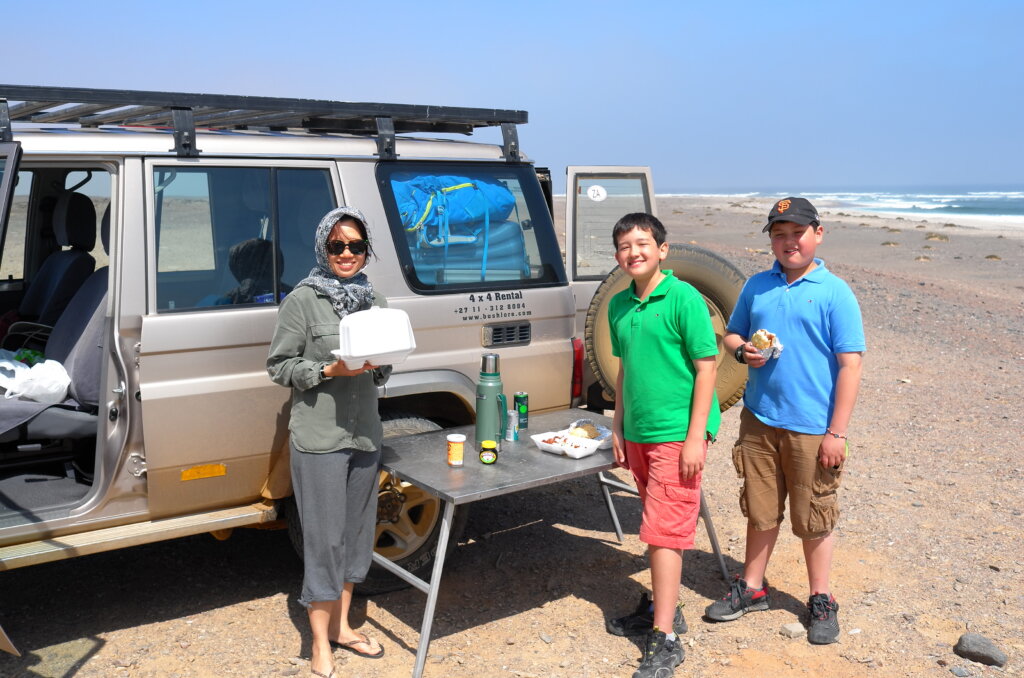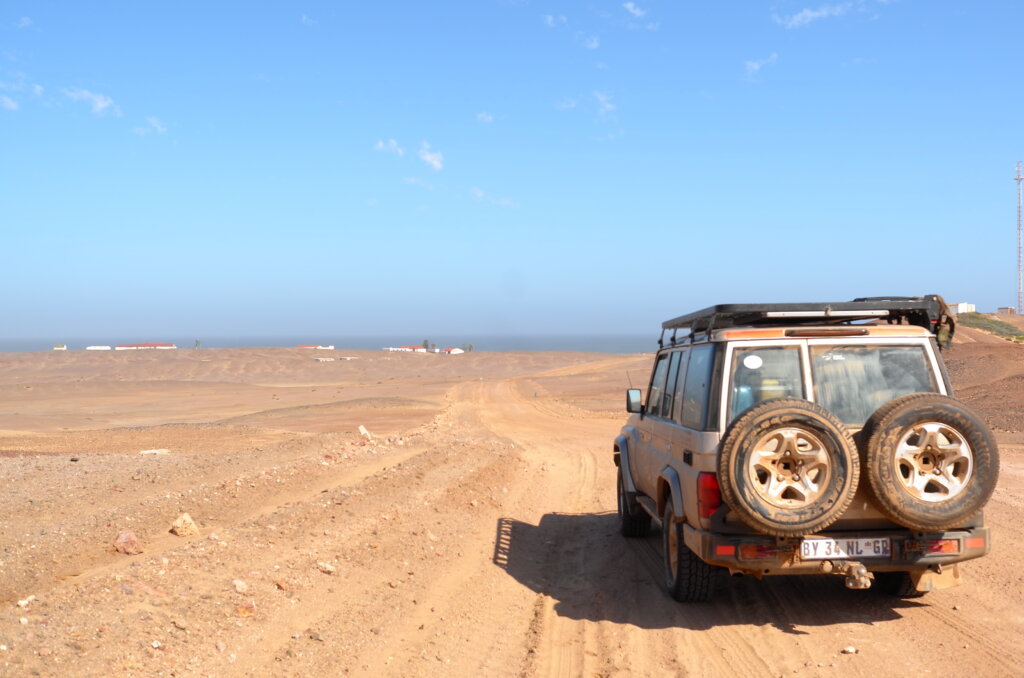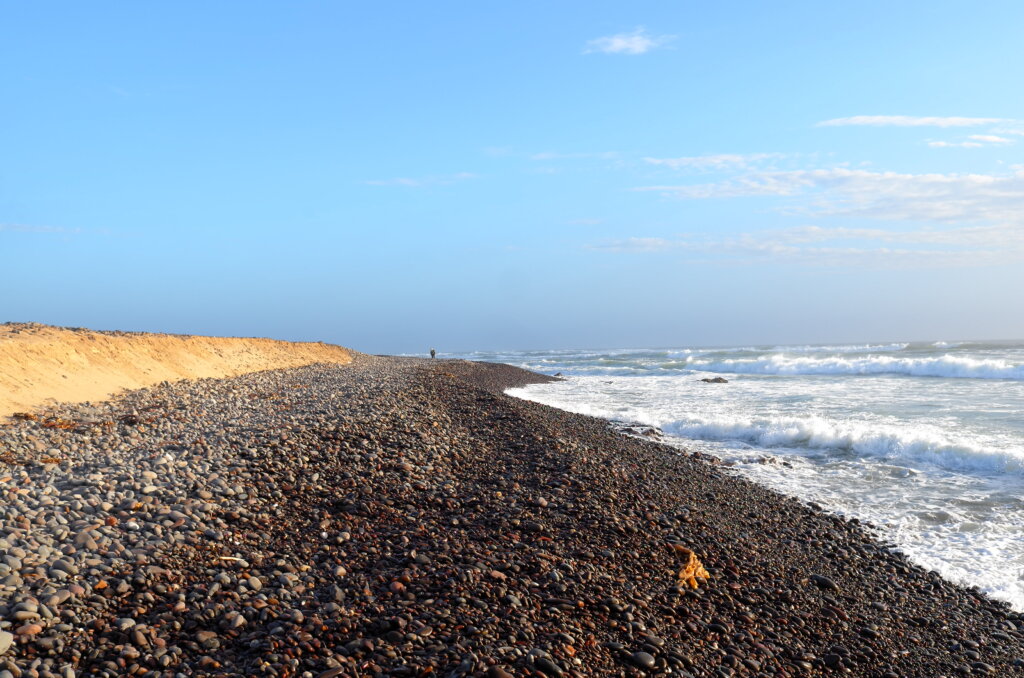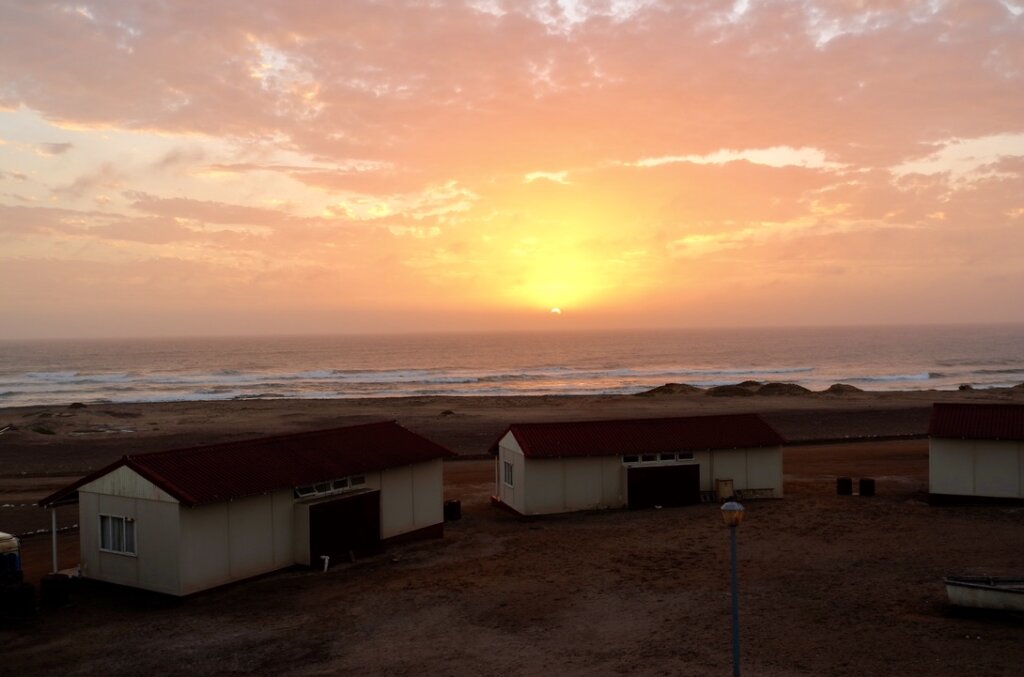It is a 380km drive up the Skeleton Coast on a desolate road hugging the Atlantic coastline to Terrace Bay which, literally, is at the End of the Road. Covered in fog most of the time, the Skeleton Coast is a graveyard of ships, littered with hundreds of shipwrecks and the remains of sailors who lost their way in the fog and got stranded on the coast. There is no “soft landing” from the icy Atlantic to the Namib desert. The waves lap the feet of the high sand dunes and for two hundred kilometers inland, there is no tree, plant or water. The sailors who survived drowning and made it to the shore had no chance of survival.
As we drive up the Skeleton Coast through fields of pale orange dunes, plains of sand so white it looks like snow and craggy hills, out of the corner of our eyes, we catch fleeting glances of the ghosts of sailors of old, wandering aimlessly along the shore. Every time we stop at a shipwreck, we get the eerie feeling of clammy hands on our shoulders.
Terrace Bay is a tiny settlement with a few rental bungalows and a permanent population of less than 20. It is the End of the World.
